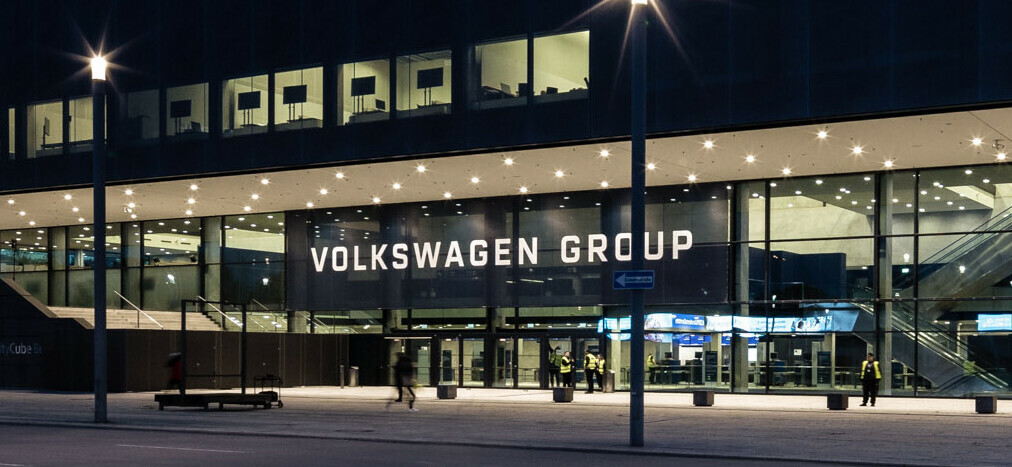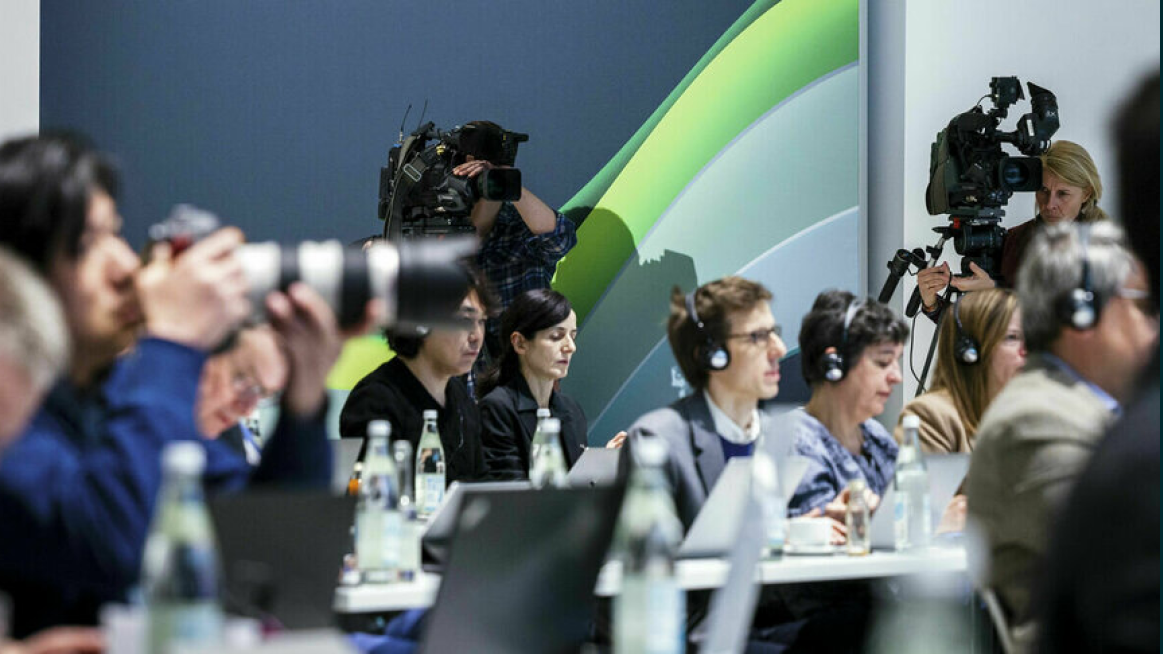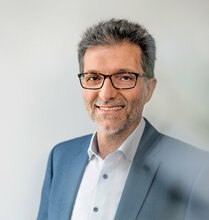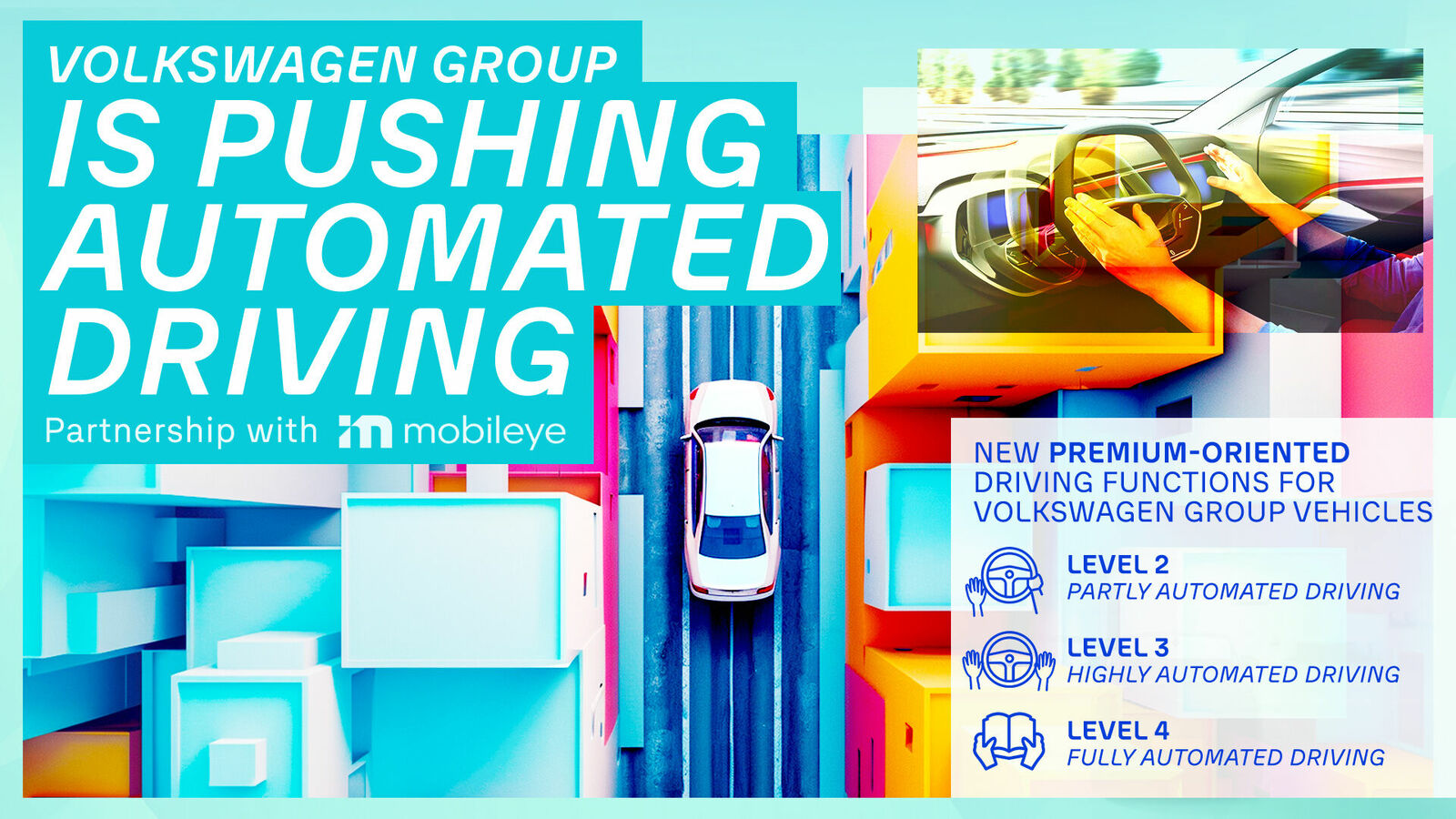“Our goal is to offer our customers throughout the world outstanding products with cutting-edge technology,” says Oliver Blume, CEO of the Volkswagen Group and Porsche AG. "New automated driving functions will significantly boost convenience and safety. These functions, which will be tailored to our brands and products, will make every trip a personal, individual experience. In Mobileye, we have an additional first-class partner to shape this automotive future together.”
The Volkswagen Group and Mobileye have been collaborating on advanced driver assistance systems for some time. In the future, Mobileye is set to also provide technologies for driving functions with enhanced Level 2 capabilities ('partially automated driving') within the Volkswagen Group. When such functions will be available, and subject to its operational design domain, drivers will be allowed to take their hands off the steering wheel but must remain attentive to the traffic and ready to intervene at any time. In addition, Volkswagen is working with Mobileye on Level 3 functions ('highly automated driving'). At this level, the vehicle will be able to temporarily take over driving tasks in specified areas; drivers are not required to monitor the system continuously.Volkswagen and Mobileye are jointly developing these technologies into cross-brand systems.
In addition, Mobileye will also offer certain production-ready functions for the new E3 1.2 premium-oriented software architecture. This new architecture is managed by Cariad and will be gradually implemented within the group by Audi, Bentley, Lamborghini, and Porsche. As part of their product strategy, the brands decide on the specific deployment of the systems and tailor them to a brand-specific driving experience.
Furthermore, the Volkswagen Commercial Vehicles brand is set to be supplied by Mobileye with software and hardware to achieve Level 4 ("fully automated driving"). Volkswagen ADMT, a Volkswagen Group subsidiary, will implement these components in fully electric development platforms based on the Volkswagen ID. Buzz. The goal of Volkswagen ADMT is to bring self-driving ID. Buzz vehicles to series production for mobility and transportation services.
“We are proud to work closely with Volkswagen Group to make the future of driving safer, more automated and more rewarding,“ says Prof. Amnon Shashua, President and CEO of Mobileye. “Through these programs, we see Volkswagen Group leading the industry in putting AI-powered advanced driver assistance technology in the hands of consumers globally and developing new services with autonomous vehicles.“
Volkswagen Group sharpens its development strategy for driver assistance systems
Volkswagen is further clarifying the division of development tasks for driver assistance systems between in-house innovation and collaboration for its new E3 1.2 and E3 2.0 software architectures. This will streamline processes and reduce complexity. With strategic partners such as Mobileye, Volkswagen Group is accelerating the rapid delivery of the premium-oriented E3 1.2 architecture, while, in the long term, the Group will rely on its own complete in-house (‘stack’) for automated driving across all brands.
For the future E3 2.0 architecture, the Volkswagen Group plans to forge ahead and consolidate its resources and development responsibilities within Cariad, its software company. Together with Bosch, Cariad aims to develop the Group's proprietary complete system. This system will be integrated into the future all-electric, fully digital, and highly scalable mechatronics Group platform, the Scalable Systems Platform (SSP).
“We are sharpening our development strategy for driver assistance systems at the same time as heightening our customer focus. We are concentrating on fast, reliable delivery,” says Michael Steiner, Head of Research and Development of the Volkswagen Group and Member of the Executive Board, Research and Development of Porsche AG.









